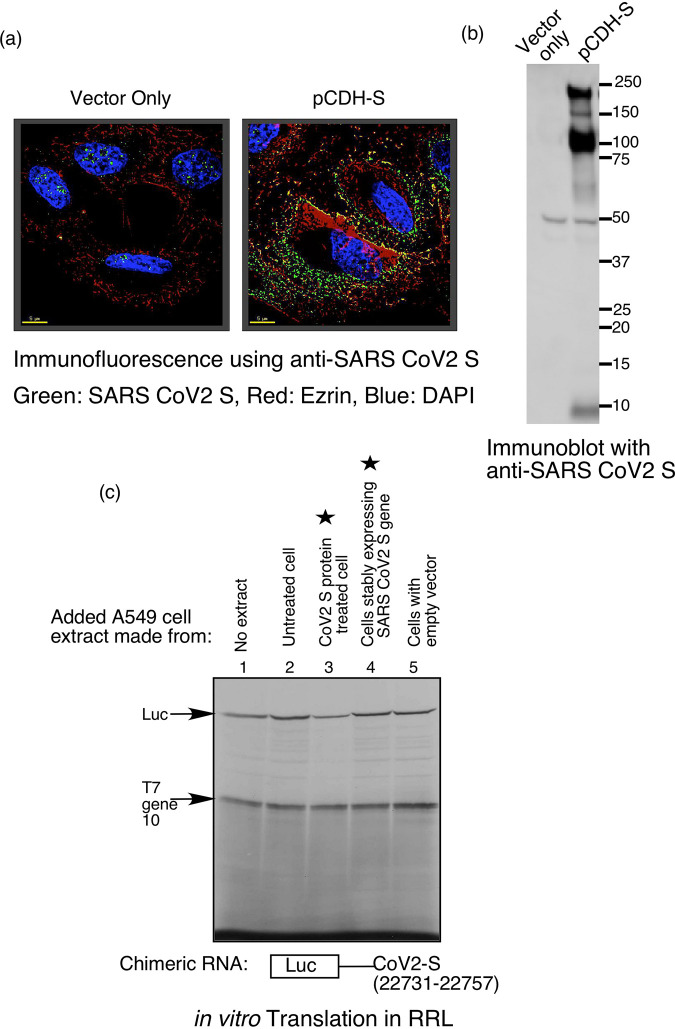FIG 6.
While exogenous addition of S protein induces VAIT element-mediated translation suppression, intracellular S protein production does not. (a) Expression of SARS-CoV-2 S protein in A549 cells stably transfected with either an empty vector (left panel) or a plasmid directing expression of S protein (pCDH-S, right panel) was detected by immunofluorescence. Cells were co-stained with antibodies against SARS-CoV-2 S protein (green) (antibodies-online.com #ABIN1030641), the membrane protein ezrin, (red) (Thermofisher #MA5-13862), and DAPI (blue; to visualize DNA). (b) Western blot analysis of extracts made from the same cells as in (a) using an antibody specific for SARS-CoV-2 S protein (antibodies-online.com #ABIN1030641). (c) Translational control assay performed as in Fig. 2 using the luciferase reporter mRNA harboring the S VAIT element and cell extracts made from A549 cells left untreated, treated exogenously treated with recombinant S protein, or stably transfected with pCDH-S (directing intracellular synthesis of S protein) or empty vector (as a negative control). For comparison, two lanes corresponding to the exogenous treatment and intracellular production (by stable expression) are marked with a star.

